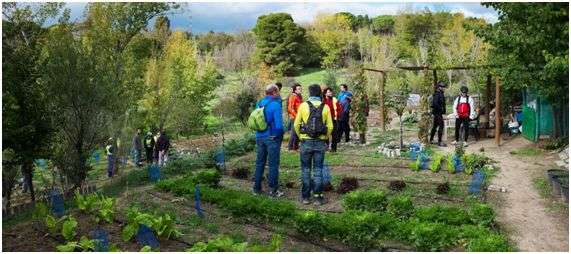Urban gardens and human health

Researchers from UPM the assess the human health risk of exposure to metals in urban gardens by assessing their oral bioaccessibility.
The working group of the Environmental Geochemistry Research and Engineering Laboratory (LI2GA) of Universidad Politécnica de Madrid has carried out a research to assess the metal content of arable soil layers of different urban gardens in order to detect the potential effects of exposure taking into account two scenarios of exposure -agricultural scenarios for adults and recreational scenarios for children- and conducting bioaccessibility testing. Results show that the estimated risk does not exceed the maximum permissible for human health. This will allow researchers to adopt strategies and techniques for the management and remediation of contaminated sites.
Urban agriculture is a socioeconomic growing movement worldwide that promotes a sustainable model of agricultural production, urban development and food safety. Besides, diverse studies have proved that this activity presents multiple environmental, economic and cultural benefits. However, urban soils are often contaminated by diverse sources and historical usages, thus there is a potential risk for human health associated with agricultural performance, consumption of seeded products and the usage of these spaces for children with recreational purposes, being necessary to study soil conditions in order to guarantee safety.
Researchers from the School of Mining and Energy Engineering at UPM collected samples of arable soil layers of different urban gardens and assessed the metal content and the physicochemical properties of the soil. Most of the risk assessment models are based on the total concentration of pollutants in the environment, but they do not consider that just one part is really absorbed by our organism.
Results show that there exist significant differences in the average total concentration of the elements among the studied urban gardens depending on their localization and previous uses of the soil. Comparing the levels in the Community of Madrid, soils are rich in copper, lead and zinc. Likewise, researchers studied the influence of some soil properties on bioaccessibility such as calcium carbonate content. This would allow experts to adopt strategies and techniques for the management and remediation of contaminated sites.
Considering two scenarios of exposure -agricultural scenarios for adults and recreational scenarios for children- and applying bioaccessibility, the estimated risk does not exceed the maximum permissible for human health, although some elements (chromium and lead) and routes of exposure (soil ingestion and agricultural products) significantly contribute to the overall experienced by receptors in urban environments.
More information: M. Izquierdo et al. Bioaccessibility of metals and human health risk assessment in community urban gardens, Chemosphere (2015). DOI: 10.1016/j.chemosphere.2015.04.079
Journal information: Chemosphere
Provided by Universidad Politécnica de Madrid

















